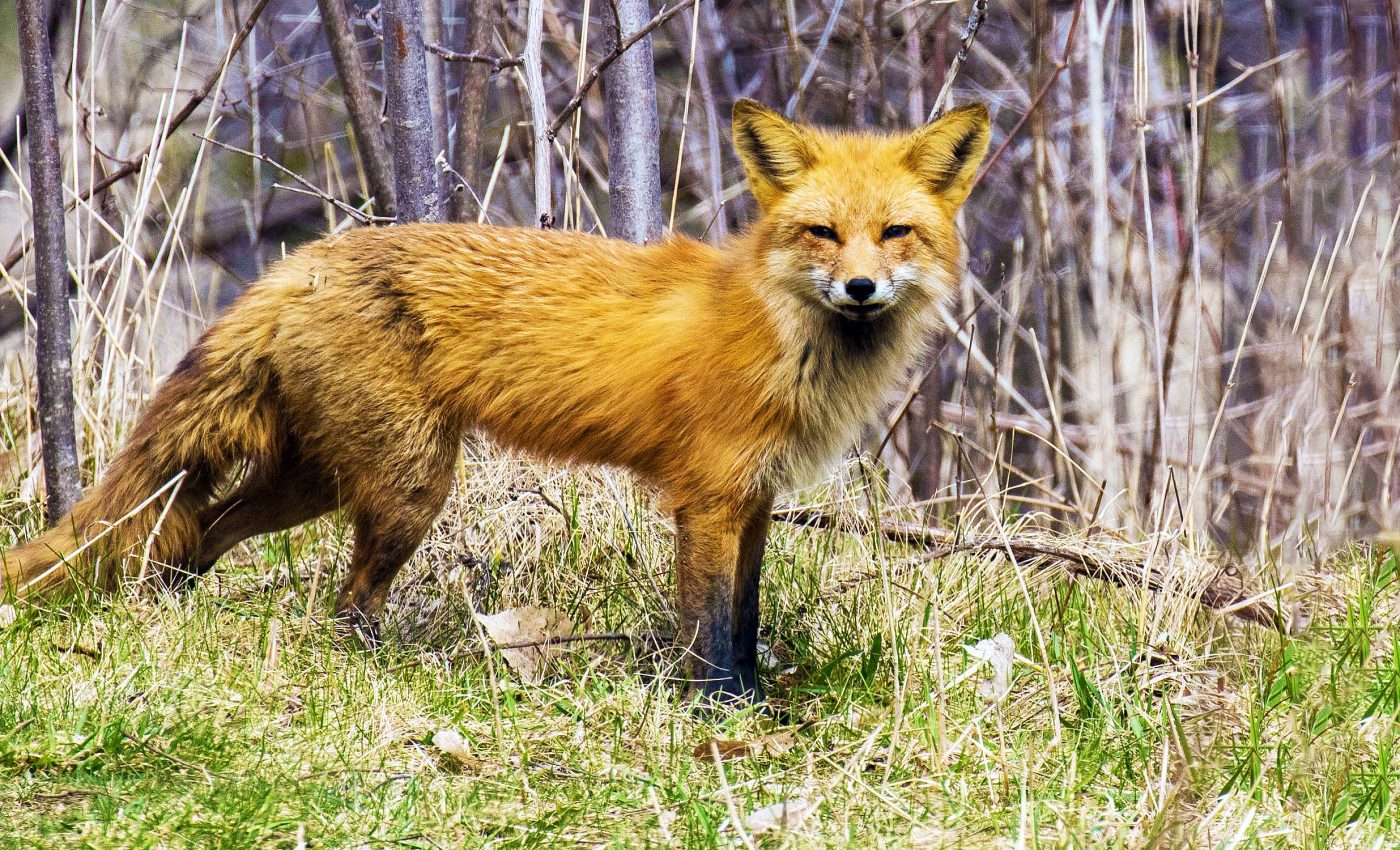
Red foxes need a genetic rescue as they edge near extinction
From the human imagination to the annals of science, the concept of a ‘rescue’ has been dramatically transformed. The word ‘rescue’ in the world of science means something quite unique and equally heroic: a fight for the survival of a species like the red fox and their genetic makeup.
In the world of conservation, the primary blinkers are not night-vision goggles or tranquilizer darts, it’s the microscopic realm of genetics.
A recent study has just illustrated this point, by uncovering some fascinating insights about the montane red foxes found in the mountains.
Red fox needs a genetic rescue
It’s not a good time to be a red fox in the Lassen Peak region of California. The numbers are scary; with approximately 30 remaining, conservationists are on edge.
The decline of these furry mountain inhabitants calls for drastic measures.
The culprit? Inbreeding.
Our red friends have been having a rough ride ever since unregulated trapping and poisoned baits kicked them off their mountain homes back in the 19th and early 20th century.
This has led to a lot of cousin-cousin tango, which is not exactly ideal.
Inbreeding has dramatic impacts on the health and survival of a species, and for the red fox of Lassen, it seems no truer.
Bridging knowledge gaps
What is genetic rescue? It’s when conservationists bring in new members to a population to introduce genetic variation and spur growth.
“Nothing we found disqualifies red foxes from genetic rescue,” said lead author Cate Quinn, who conducted the research as a University of California, Davis (UC Davis) postdoctoral researcher with the Mammalian Ecology and Conservation Unit within the School of Veterinary Medicine.
She is now a research biologist with the USDA Forest Service Rocky Mountain Research Station. “The study suggests that genetic rescue could be a viable option for the Lassen population,” Quinn states.
To maximize the effectiveness of this rescue plan, scientists have gone back in time with genome sequencing of the four subspecies of montane red foxes.
This step uncovers the historical baseline genetic rescue seeks to restore and the deeper evolutionary relationships these foxes share. A journey back in time could very well be the key to their future survival.
Genetic rescue of the red fox is controversial
The study found that our Lassen red foxes were once part of a connected, abundant, and diverse population of montane red foxes throughout the Western United States.
Ten to twelve thousand years ago, these foxes were not in isolated pockets but living it large across the region. This paints a hopeful picture for the future of the Lassen foxes.
While genetic rescue offers promising solutions, it is not without its challenges and controversies. Introducing new genetic material to a population comes with its own set of risks.
There is the potential for disrupting local adaptations, as introducing individuals from different environmental backgrounds may not be optimal for the native habitat of the Lassen foxes.
Moreover, ethical considerations arise, questioning the extent to which human intervention should interfere with natural processes.
Balancing the urgency of preventing extinction with respect for ecological and evolutionary dynamics remains a pivotal line of inquiry in the conservation community.
Hope for the future: Saving fox genetics
Despite these challenges, the narrative for the Lassen red foxes is one of optimism and progressive conservation efforts.
Researchers, conservationists, and wildlife agencies are collaborating to develop a nuanced, evidence-based approach to genetic rescue.
Pioneering studies in genetics provide a roadmap, enabling more informed decisions that honor biodiversity while addressing urgent conservation needs.
By aligning technology and ecological awareness, there is hope that these enigmatic mountain dwellers will once again thrive, not only in the Lassen region but potentially in broader territories reminiscent of their ancestral expanses.
This holistic approach encapsulates a harmonious interaction between humans and nature, showcasing science as a beacon of hope in the pursuit of ecological balance.
On the road to recovery?
If the things that caused their decline are now gone, can we bring them back to their former glory? According to Ben Sacks, director of the Mammalian and Ecology Conservation Unit at UC Davis School of Veterinary Medicine, there is indeed hope.
Therefore, the efforts to counteract inbreeding depression could very well light the way towards a hopeful future for these foxes.
However, Quinn offers a word of caution. An authentic genetic rescue requires reconnection of the entire subspecies, not just a single population.
“All in all, if we only consider each small pocket individually, they’re in trouble. But if we look at the whole montane system, restoration is still possible,” Quinn concludes.
This important study, carried out by a team of dedicated scientists, gives a glimmer of hope for the future of the montane red foxes.
With the help of genetics, we might just be able to pull off a real-life rescue mission for the red fox. Time will tell, but for the Lassen red foxes, it seems the cavalry has arrived, and their hero wears a lab coat.
—–
The study was jointly funded by the U.S. Fish and Wildlife Service, California Department of Fish and Wildlife, and UC Davis.
The study is published in the journal Molecular Biology and Evolution.
—–
Like what you read? Subscribe to our newsletter for engaging articles, exclusive content, and the latest updates.
Check us out on EarthSnap, a free app brought to you by Eric Ralls and Earth.com.
—–













